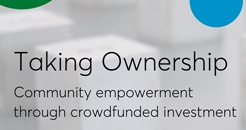 Community empowerment through crowdfunded investment
Community empowerment through crowdfunded investment
From a report by Nesta
In 2017, a group of local residents in Plymouth decided to bring The Clipper, a once notorious but now unused and dilapidated pub on the city’s Union Street, back to life as a community market and work space for local startup businesses. To raise funds and ensure the new space involved the local community, the Nudge Community Builders Group decided to raise part of the money through community shares, giving local people an opportunity to invest in The Clipper. Through this they managed to raise over £206,000 in investment from 165 people which, including investment from Plymouth City Council and Co-operatives UK, enabled them to bring the building back into use. In addition to the chance to help improve their local area and access new facilities, investors got a share in the ownership of The Clipper and a say in how it is run, with plans to be paid interest if the project is profitable.
The Clipper, and how it managed to get the community to invest in rejuvenating a local space, is a good example of the key features and potential benefits of crowdfunding community investment.
This is one example from a report by Nesta which explores how investment crowdfunding models can be used to fund projects which are owned and run by the communities they serve, enabling community-led regeneration and boosting local resilience.
Community-led projects have the power to transform local areas socially, economically and environmentally. Local governments, city authorities and institutional funders have a crucial role to play in supporting and growing this sector, to make the most of the opportunity in using these tools to boost social infrastructure and community empowerment across the country.
The report contains:
-
A description of what is meant by crowdfunding community investment, with an outline of the variety of projects which can be supported – from pubs to community gardens – and its five elements (project, community, investment model, sustainability business plan and governance model).
-
An overview of the crowdfunding process and the main financial and governance models available to community groups.
-
A ‘how-to’ guide for crowdfunding community investment, with guidance on choosing a financial and governance model to suit the project context, through analysis of the pros and cons of a range of options.
-
Insights from interviews with community projects and institutions to identify and provide an analysis of the main opportunities and challenges for community investment, governance and ownership.
-
Examples of the roles that institutions such as local government, city authorities and foundations can have in supporting community groups undertaking such projects, to enable the biggest social impact.
Download the report from
here.
Retweet about this article:
From a report by Nesta, 03/07/2019